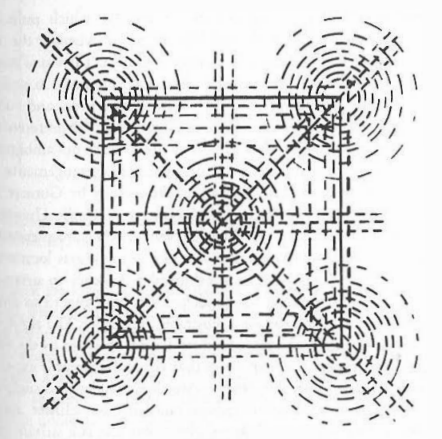“No object is perceived as unique or isolated. Seeing something involves assigning it a place in the whole: a location in space, a score on the scale of size or brightness or distance.”
“We do not establish sizes, distances, directions singly and then compare them piece by piece. Typically we see these characteristics as properties of the total visual field”
I’m right now thinking about the phrase “man if the measure of all things” from Protagoras, seems like a different wording for the same thing.
“The various qualities of the images produced by the sense of sight are not static” Basically we try to create a story about the content of a produced image just by looking because the “The visual experience is dynamic … What a person or animal perceives is not only an arrangement of objects, of colors and shapes, of movements and sizes. These tensions are not something the observer adds, for reasons of his own, to static images. Rather, tese tensions are as inherent in any percept as size, shape, location or color. Because they have magnitude and direction these tensions can be described as psychological ‘forces’.”
Its common for designers and architects seek the proper distance between physical objects and thesis knowledge is important to understand how balance works. The next image is called “structural skeleton” contains the result of informal explorations about this subject. The boundaries and the center of the square are important, but also the cross-shaped framework formed on the center by the horizontal axes and by the diagonals. The center, the principal locus of attraction and repulsion, establishes itself through the crossing of theses four main structural lines. Others points inside on the lines are much less powerful than the center.

If you place anything inside a square, it is affected by forces of all these structural factors. The relative strength and distance of these factors will determine their effect in the total configuration. At the center is balanced. Any location that coincides with a feature of the structural skeleton introduces an element of stability that can be counter-acted by other factors.
If a influence from a particular direction predominates, this results a pull in that direction. An unpleasant effect is produced by locations at which the eye don’t know if the object is pressing to any particular direction. In ambiguous situations the visual pattern ceases to determine what is seen, and the subjective factors in the observer, such as his focus of attention. The next image is from Gunnar Goude and Inga Hjortzberg and show how a person perceive the tendency of movement for a object placed in a square. Observe the tendency to go towards the center and the borders.

We shall have many occasions to observe that physical and psychological systems exhibit a very general tendency to change in direction of the lowest attainable tension level, normally the reduction of tension can be obtained when elements of visual patterns can give in to the directed perceptual forces inherent in them